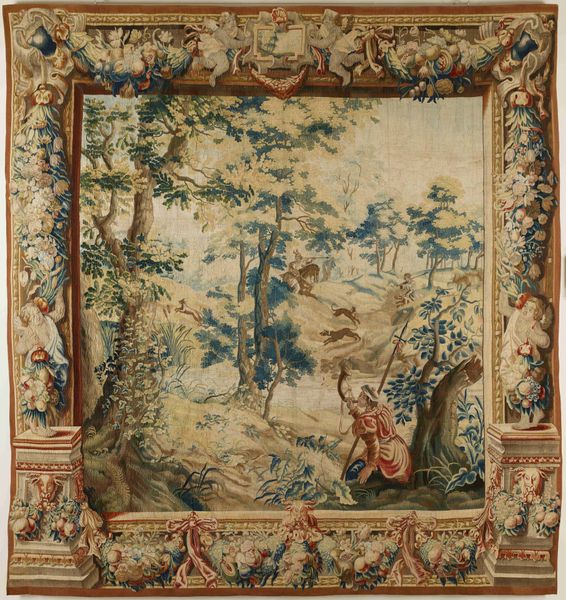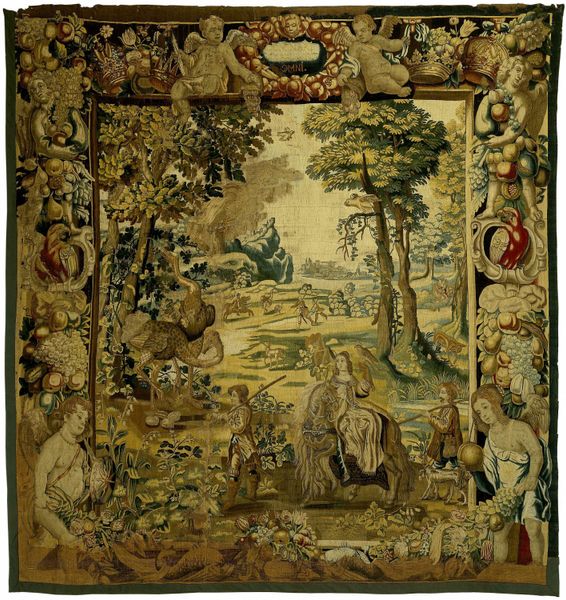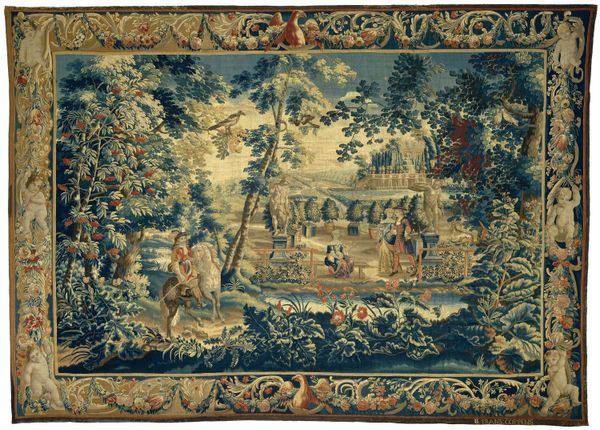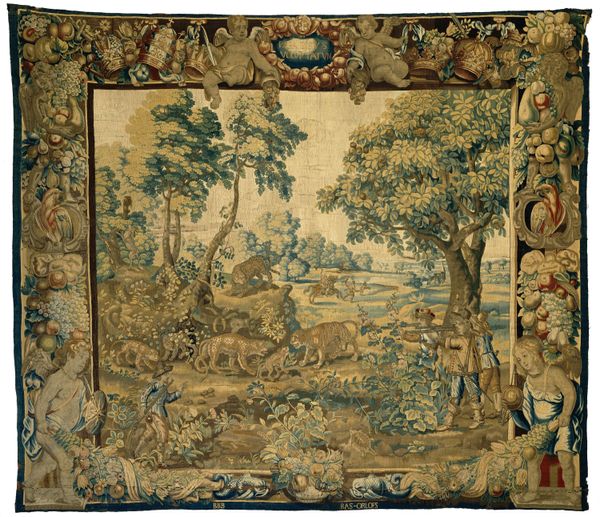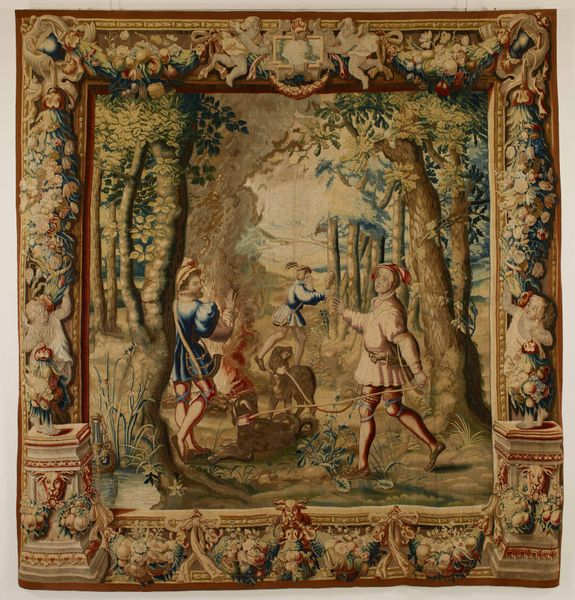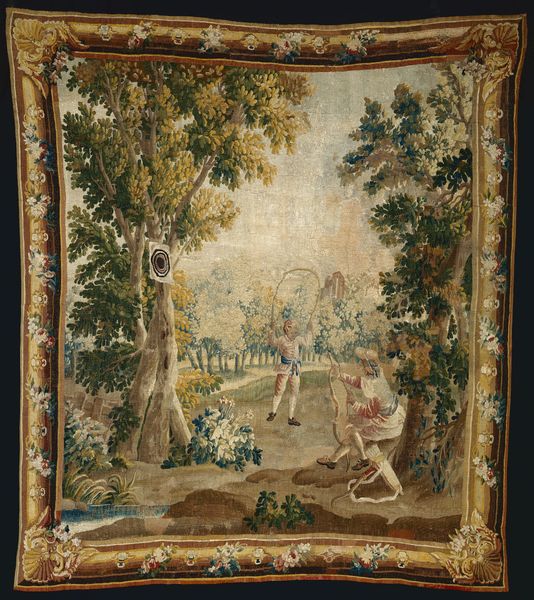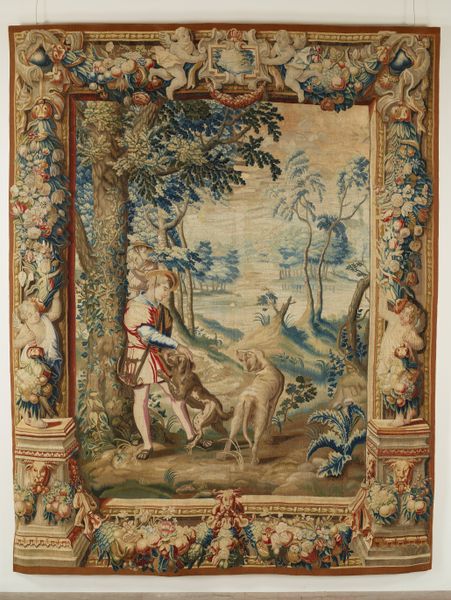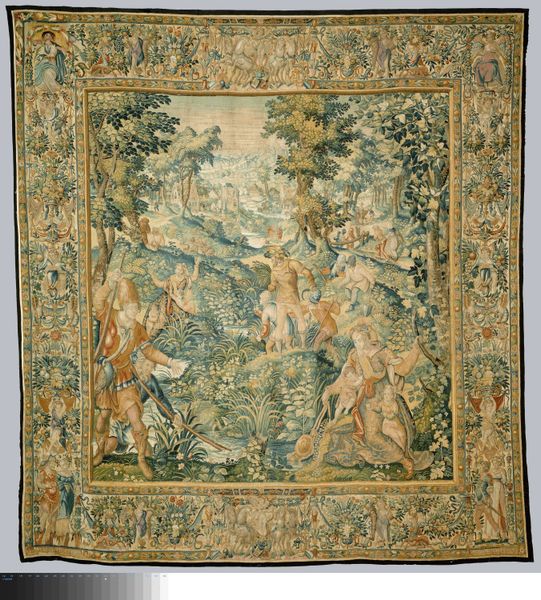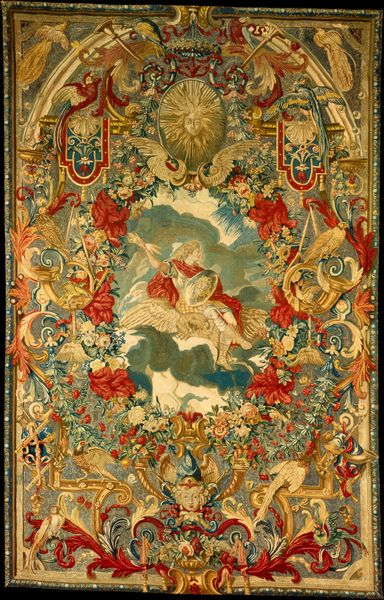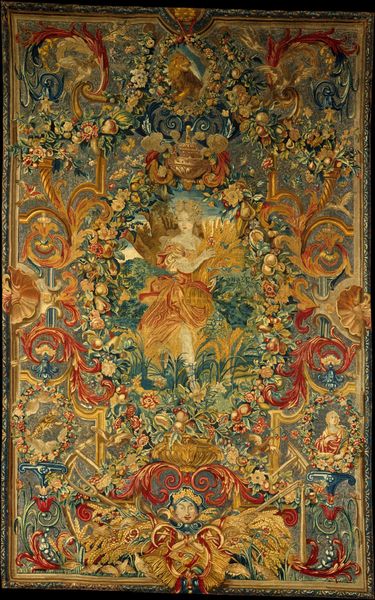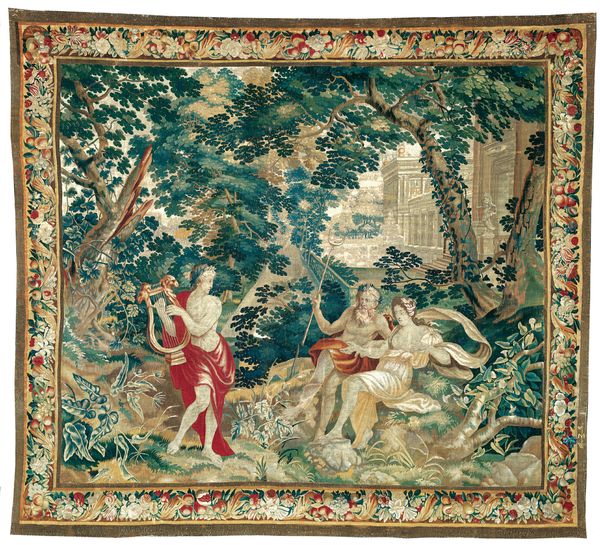
weaving, textile
#
narrative-art
#
baroque
#
weaving
#
landscape
#
textile
#
figuration
Dimensions: height 340.0 cm, width 260.0 cm
Copyright: Rijks Museum: Open Domain
Erasmus Oorlofs created this landscape tapestry with soldiers attacking a woman, but its date remains unknown. Tapestries like these were luxury items in the 16th and 17th centuries, adorning the homes of the wealthy. Depicting verdant landscapes with classical or biblical scenes, they served as symbols of status and taste. Notice the inscription "Pargit Mars," asking Mars, the god of war, to depart. The image creates meaning through visual codes, cultural references, and historical associations. Produced in the Southern Netherlands, this tapestry reflects a society grappling with the realities of war. The scene of soldiers attacking a woman may allude to the violence inflicted upon civilian populations during conflicts like the Eighty Years' War. It serves as a stark reminder of the era's political instability and social anxieties. To understand this work more fully, historians can use period documents and cultural artifacts, and contemporary accounts. By understanding its social and institutional context, we can appreciate its commentary on the social structures of its time.
Comments
No comments
Be the first to comment and join the conversation on the ultimate creative platform.
